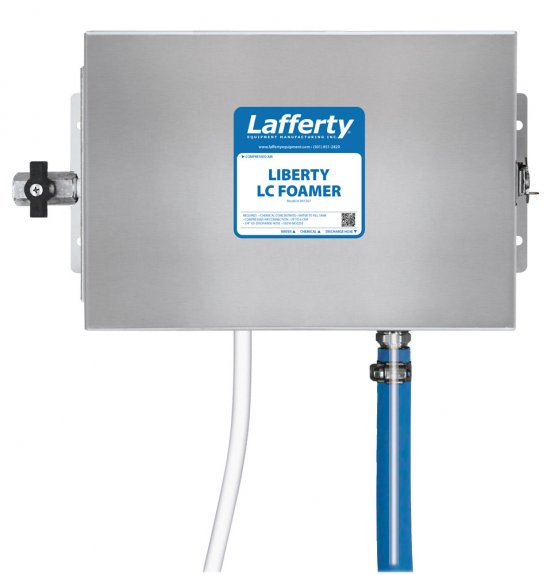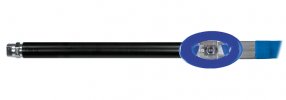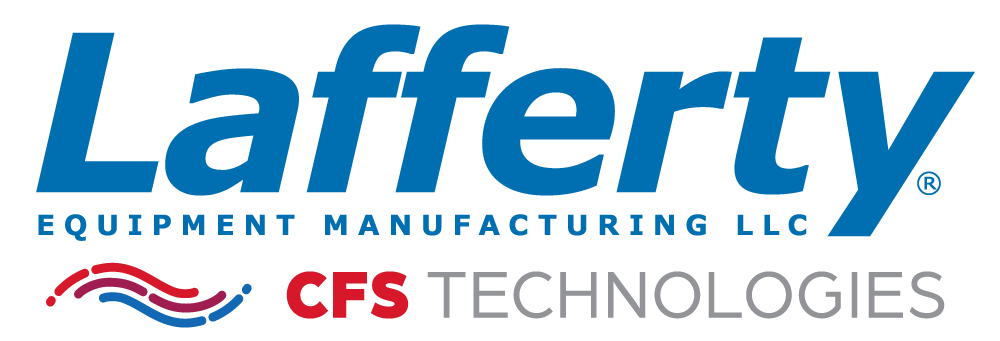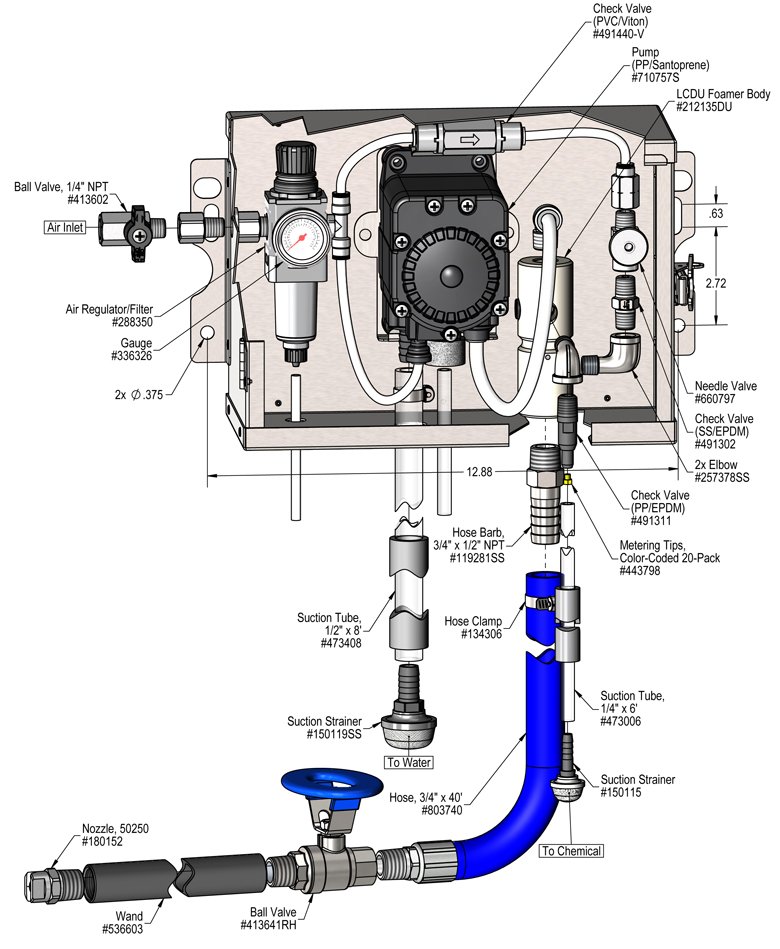Overview
The Liberty LC Foamer is a medium volume venturi foam applicator designed for facilities with low or fluctuating water pressure. It projects foaming chemicals on to any surface up close or at distances up to 10 feet. This unit features a stainless steel enclosure and uses a cost-effective Flojet air-operated, double-diaphragm pump to draw water from a static tank and provide the pressure for the venturi "LC Foamer". The LC Foamer body draws and blends chemical concentrate into the water stream to create an accurately diluted solution. Compressed air is injected into the solution to greatly increase volume and coverage ability and rich, clinging foam is projected through the hose, wand, and fan nozzle.



